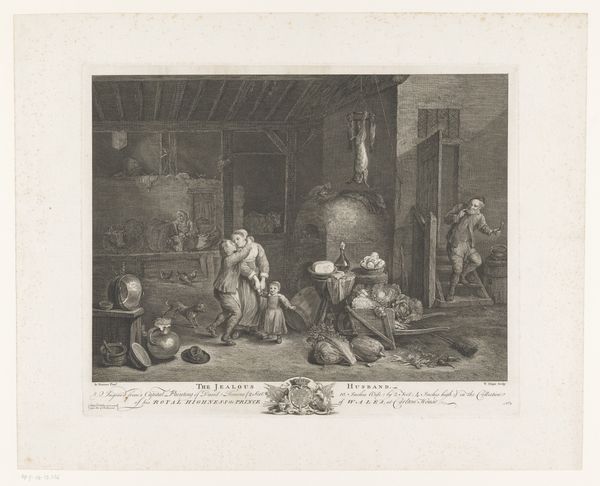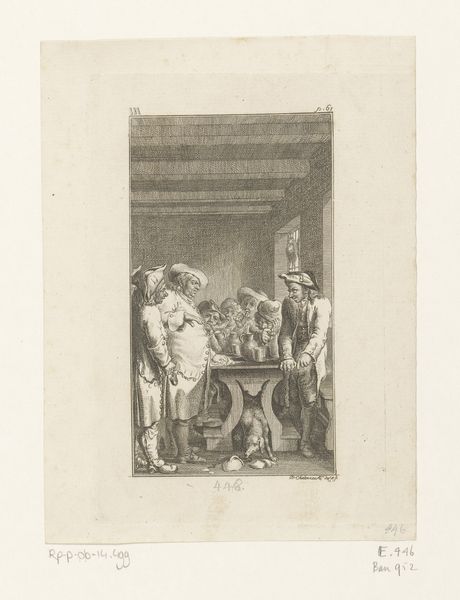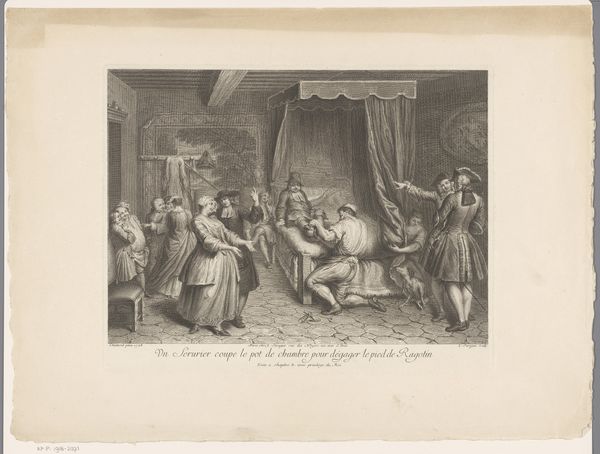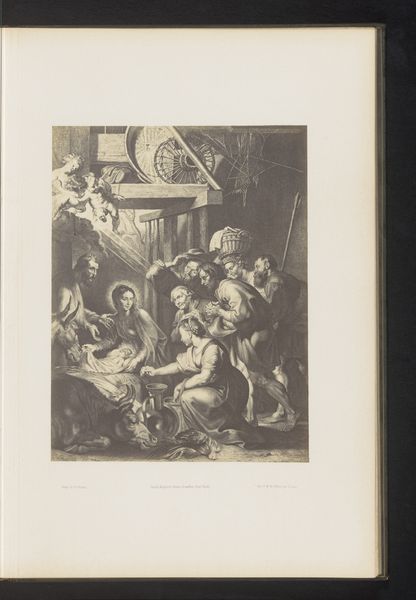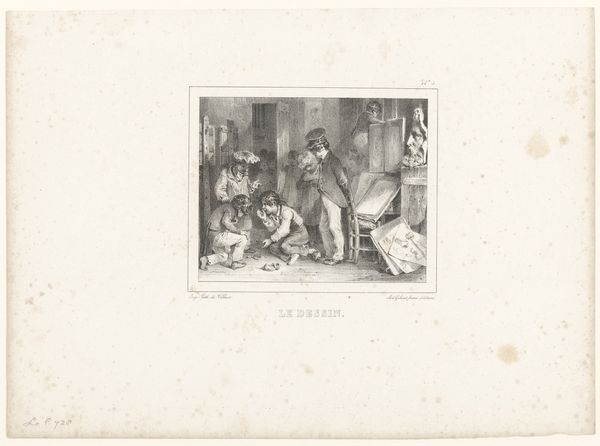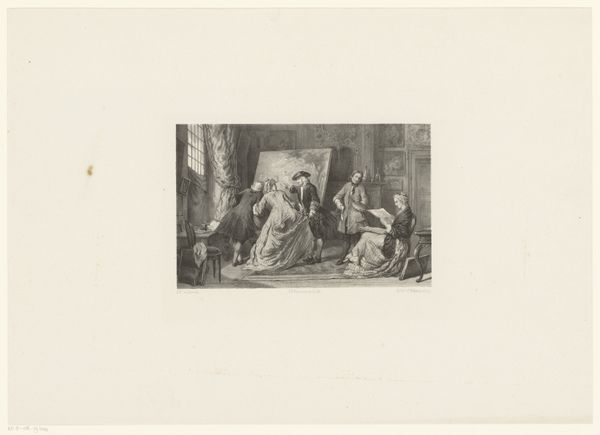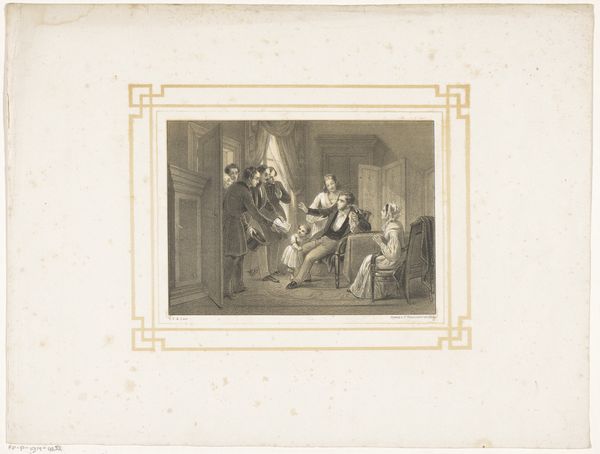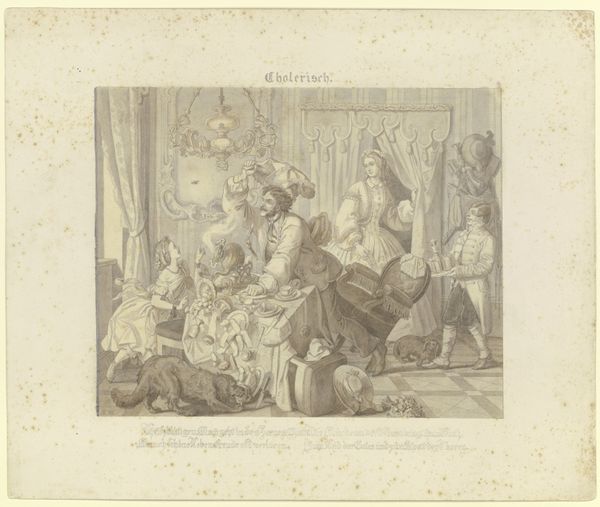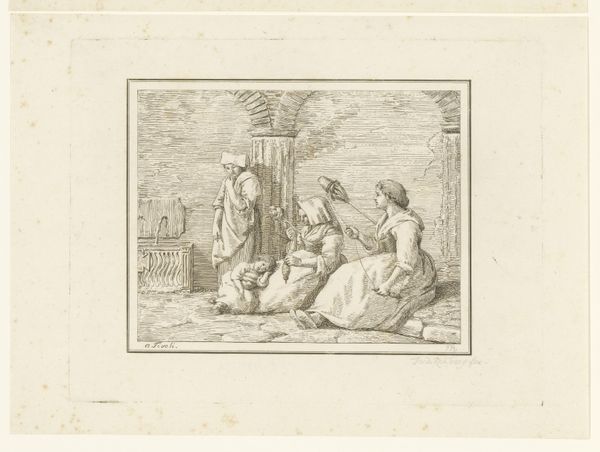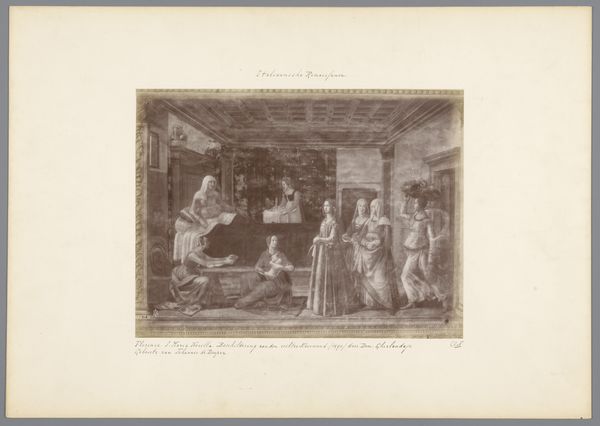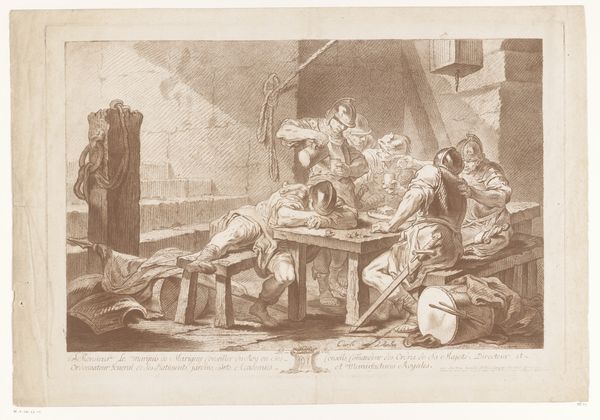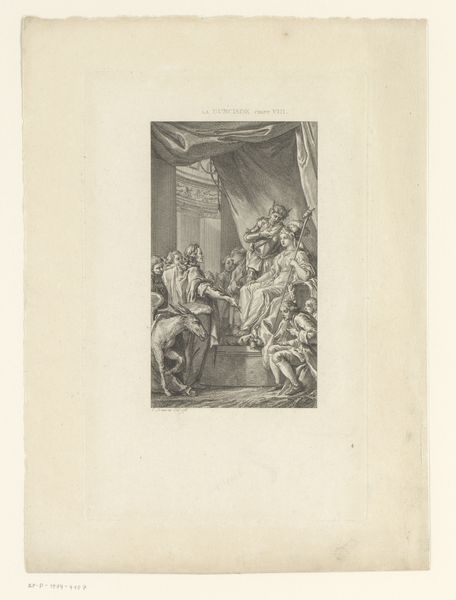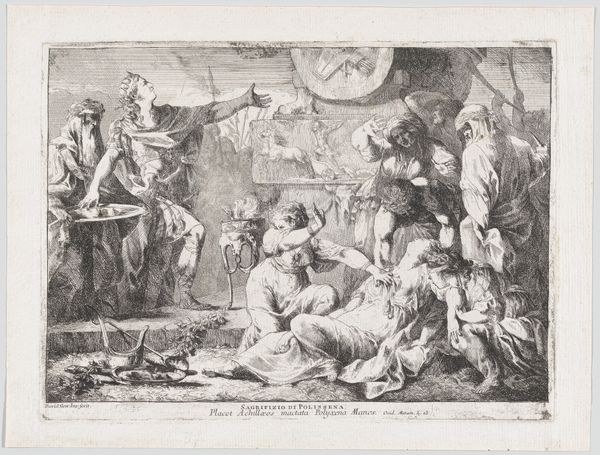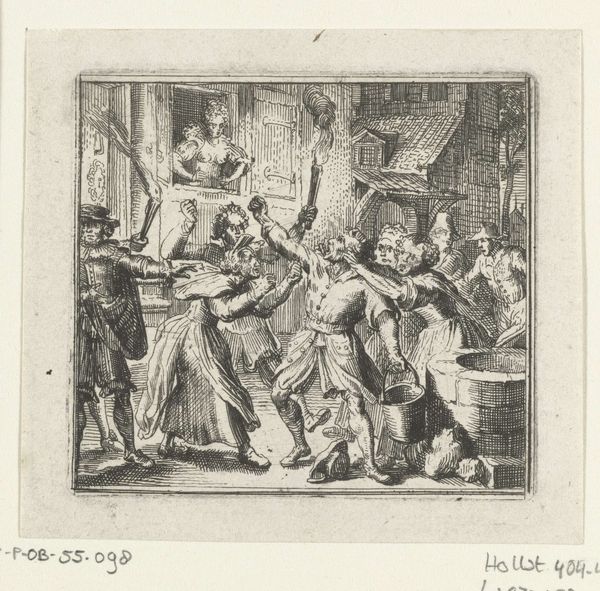
print, engraving
#
aged paper
#
narrative-art
# print
#
pencil sketch
#
old engraving style
#
figuration
#
romanticism
#
history-painting
#
engraving
Dimensions: height 260 mm, width 357 mm
Copyright: Rijks Museum: Open Domain
Curator: What a striking print. This is "Geboeide man te midden van groep mannen," or "Bound Man Amongst a Group of Men," an engraving by Ary Scheffer, likely created sometime between 1829 and 1839. Editor: The composition immediately feels… constricting. All those figures crowding in, the darkness, the obvious tension – it’s unsettling, despite being rendered in such a delicate medium. Curator: Notice how Scheffer uses light and shadow. The illumination falls on the bound man, drawing our eyes to his vulnerability. Consider also the symbolism of binding – it speaks to loss of control, perhaps injustice, a power dynamic visually reinforced by the composition. Editor: Exactly. I’m immediately drawn to the social and political implications here. Who are these men, and what power do they hold over him? It hints at larger systemic issues, historical events perhaps linked to suppression. What narratives might be behind this? Curator: Scheffer, influenced by Romanticism, frequently explored themes of suffering and morality. In historical context, this image echoes the French Revolution, or other historical moments of great upheaval and conflict. Binding, in particular, represents an archetypal symbol of unjust authority. The image clearly echoes older art motifs concerning Christ's persecution. Editor: That's important context. By invoking such established imagery, is Scheffer potentially equating the plight of this individual with wider cultural narratives? It pushes the piece beyond simply depicting a moment; it layers it with resonance. I want to think about it terms of Foucault's work on power and discourse; what kind of structures are present? Curator: His exploration of emotional intensity certainly adds to that sense. The sketch-like quality amplifies the drama, gives it an immediate feeling. Engravings like this would circulate widely. That's the genius; by portraying emotion with relatable symbolism, the themes are able to translate culturally. Editor: So, as viewers today, we're left grappling with these very real, very difficult legacies. Looking closer now, this prompts a bigger meditation, really, doesn't it? Thanks to you. Curator: Precisely. Art like this opens a powerful space to contemplate how historical conflicts persist symbolically to the modern age.
Comments
No comments
Be the first to comment and join the conversation on the ultimate creative platform.
